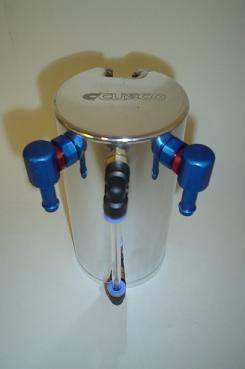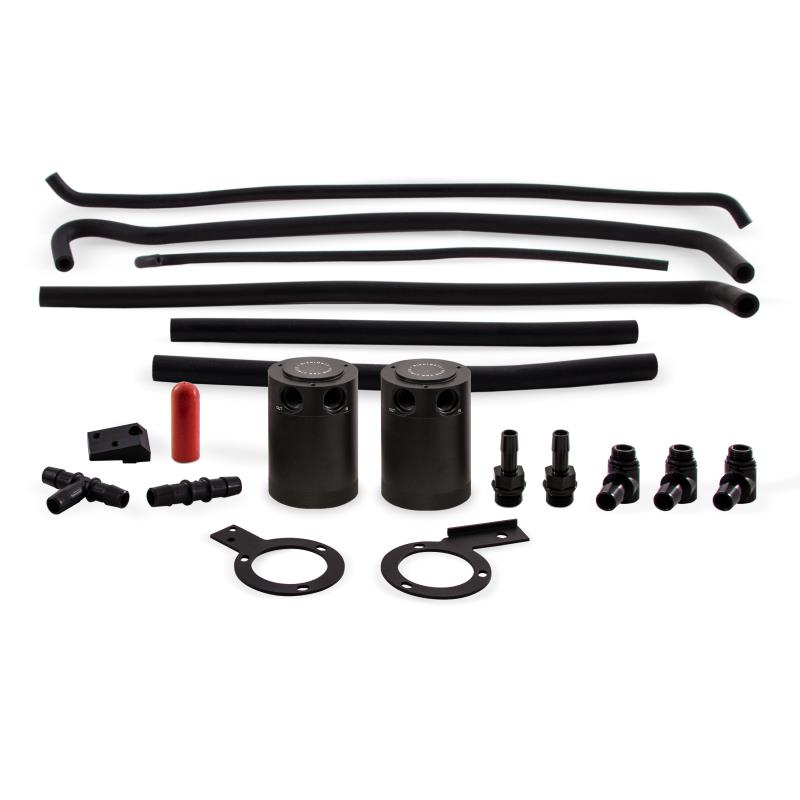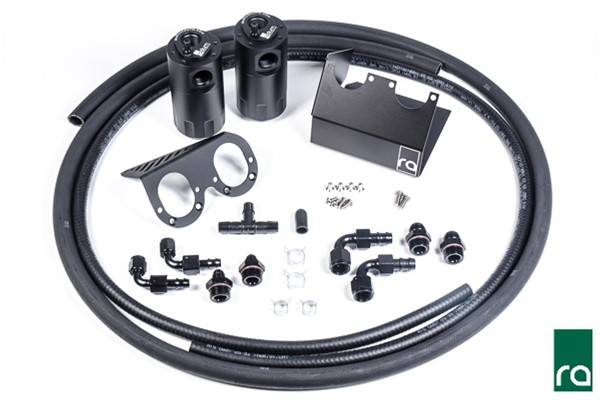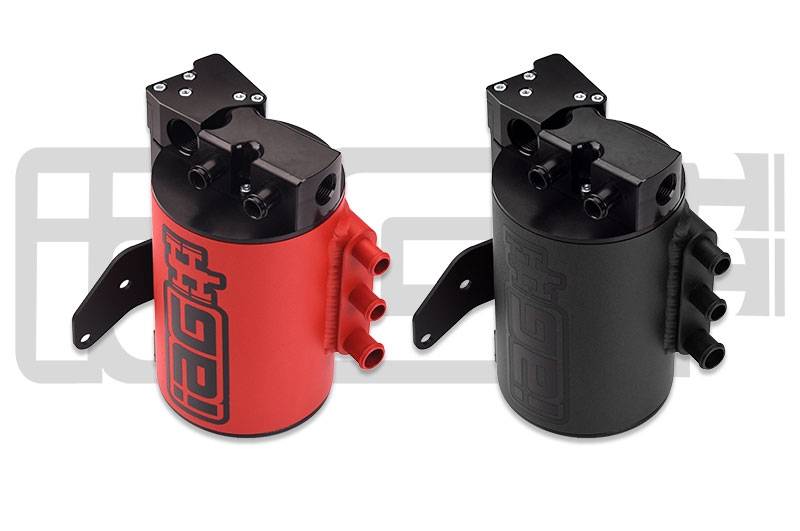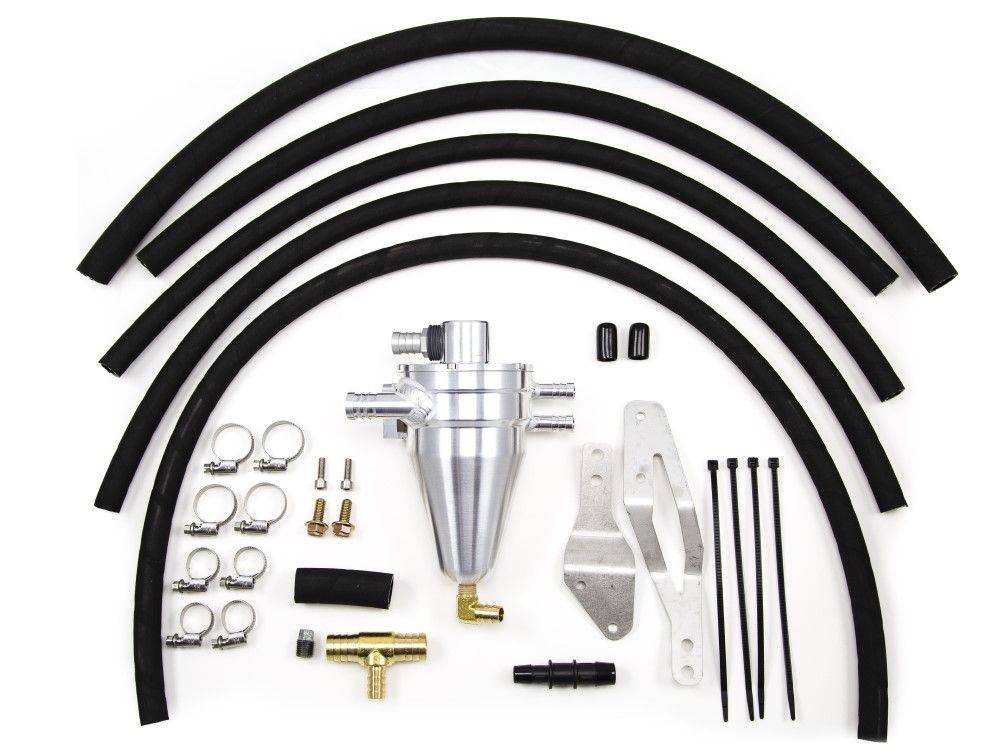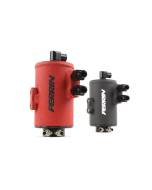We use cookies to make your experience better. To comply with the new e-Privacy directive, we need to ask for your consent to set the cookies. Learn more.
What is the difference between a Catch-Can and an Air-Oil Separator?

In the Subaru world, if you have a modified WRX or STI, most likely a Catch-Can or Air-Oil Separator will be on your list of parts to add to your car if you haven't all ready. They are a very common part to install, and many people recommend them for most turbo-charged cars whether they are stock or modified.
But because they are so similar, it can be confusing to try to pick the right part for application. So we wanted to take a minute to look at both options and highlight the key differences so hopefully you will have a better idea of which one will work best for you.
First, pretty much any modern WRX or STi, or turbocharged Subaru for that matter, will have a PCV system from the factory. PCV stands for Positive Crankcase Ventilation, and the system is designed to release any gasses or pressure that may build up in the crank-case. And if you follow these hoses, you will find that they all run into the inlet system of the car. The reason for this is to capture the oil, water, and fuel vapor that can come from the crank-case and send it back through the combustion chamber and catalytic converters so that it can be burned and cleaned before going out to the atmosphere.
Under normal circumstances, the amount of oil that comes in through the PCV system is minimal, and at worst it will leave a light film of oil behind. But in the case of a modified WRX or STI, the oil the goes through the PCV system can be more significant up to the point of leaving behind a measurable amount of oil in the intake pipes and intercooler. At a worst case, you can see a few teaspoons of oil that are trapped in your intercooler when you remove it for instance.
What a Catch-Can and an Air-Oil Separator (AOS) are designed to do is to intercept and capture that oil vapor before it can get to your cars intake track. This prevents that oil vapor from creating carbon deposits, or in a worst case, from lowering the effective octane of your fuel which can lead to tuning issues or knock, etc..
Generally speaking, a Catch-Can will have a simpler design than an AOS. There are many Catch-Cans that are literally empty cans that have a single inlet and a single outlet. The idea with this simple design is that the pressure drop from the small hose to the large can, coupled with a hard bend (the inlet and outlet are usually a hard 90* bend) will cause the oil to deposit out and stay in the can while gasses will continue on and go into the inlet. Even a simple design like this can be effective at capturing oil when installed properly.
Some Catch-Cans will have a more elaborate set of baffles or chambers to force the oil to be captured in the can. When designed properly these can be significantly more effective than a Catch-Can that has no baffling. Most all Air-Oil Separators will have this kind of elaborate design to try to ensure that they are capturing every drop of oil vapor that comes through the PCV system. They key difference between the two is what they do with the oil that is captured.
In the case of a Catch-Can, it will simply hold any oil or liquid captured until it is drained. And they have to be drained manually. Where this can be an issue is if the can does fill up, it can lead to a significant amount of oil getting into the engine which will cause excessive smoking. At an extreme, if the can is filled up, this can actually block off the path for pressure to escape from the crank-case which can cause a build-up of pressure that can cause seals to fail, and in some cases it can prevent the turbo from draining properly which can also lead to smoking, and a quick turbo failure.
An Air-Oil Separator on the other hand will have the addition of a drain, which will let the oil captured to drain back into the oil pan. The idea here is that the oil that is captured came from the engine's oil supply, and you want to keep it circulating through the engine so you are not gradually taking oil out of the engine's sump. This helps to maintain a more consistent oil level, and when working properly, it will avoid the issue where the can fills up with oil which can cause issues on its own.
There is one other thing to mention about Air-Oil Separators that are installed on Subaru's which run E85 for fuel. In that specific case, there is a tendency for the captured blow-by (in either a catch-can or AOS) to have a waxy consistency when it cools off. Over time, this can lead to a quicker build-up in the can which can also lead to blocking off the ports that connect to the crank-case. For that reason, most Air-Oil Separators are designed to run coolant through them to melt these deposits to keep the contents draining back to the sump, and to prevent clogging.
There is some debate about the effect of draining oil captured in an AOS back into the sump, and there by the engine's oil supply, but that will be addressed in another blog. For now, hopefully you have a much clearer picture of what the difference is between a Catch-Can and an Air-Oil Separator, but we will give you some helpful criteria to help you pick which one is right for you in another entry as well.
Thanks for reading!
-Jon Cooley

